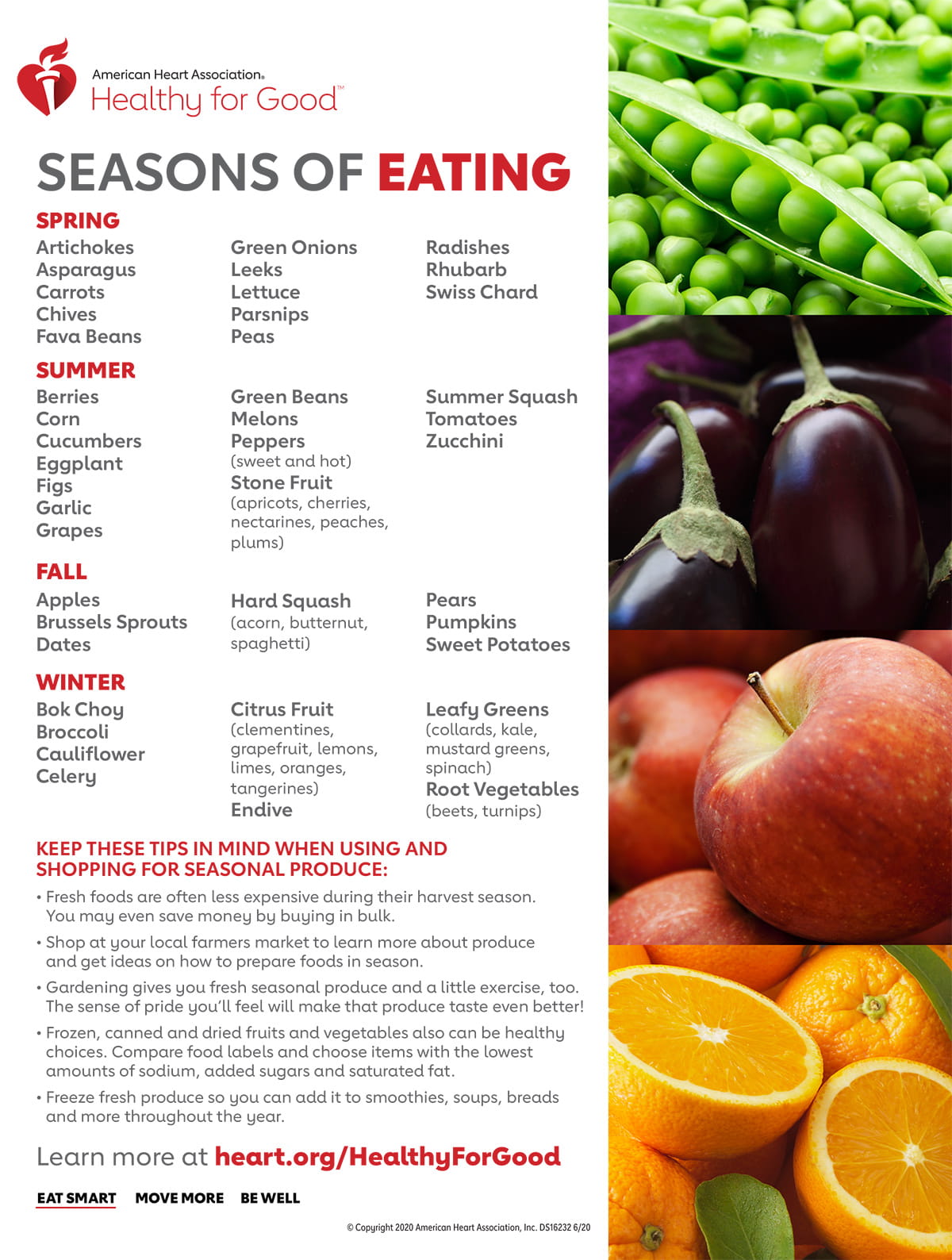Seasons of Eating Infographic

Download Seasons of Eating Infographic (PDF) | Spanish version (PDF)
Spring
- Artichokes
- Asparagus
- Carrots
- Chives
- Fava beans
- Green onions
- Leeks
- Lettuce
- Parsnips
- Peas
- Radishes
- Rhubarb
- Swiss chard
Summer
- Berries
- Corn
- Cucumbers
- Eggplant
- Figs
- Garlic
- Grapes
- Green beans
- Melons
- Peppers (sweet, hot)
- Stone fruit (apricots, cherries, nectarines, peaches, plums)
- Squash, summer (yellow, zucchini)
- Tomatoes
- Zucchini
Fall
- Apples
- Brussels sprouts
- Dates
- Pears
- Pumpkins
- Squash, winter (acorn, butternut, spaghetti)
- Sweet potatoes
Winter
- Bok choy
- Broccoli
- Cauliflower
- Celery
- Citrus fruit (clementines, grapefruit, lemons, limes, oranges, tangerines)
- Endive
- Leafy greens (collards, kale, mustard greens, spinach)
- Root vegetables (beets, turnips)
Keep these tips in mind when using and shopping for seasonal produce:
- Save money. Fresh foods are often less expensive during their harvest season. You may even save money by buying in bulk.
- Choose local produce. Eat locally and regionally grown fruits and vegetables when possible. These offer more taste and retain more nutrients than produce that's been picked weeks earlier and shipped across the country or world. Choosing local also can help reduce our carbon footprint.
- Shop at a local farmers market. Learn about produce you may be unfamiliar with and get ideas on how to cook it.
- Grow your own produce. Gardening offers fresh seasonal produce and some physical activity, too. Because gardening can be therapeutic and gratifying, it can also help with overall well-being.
- Freeze fresh produce. Add frozen fruit and vegetables to smoothies, soups or baked goods, such as blueberries in pancakes or shredded zucchini in a quick bread.
Chopped Colorful Veggie Salad
This Simple Cooking with Heart salad recipe is bursting with flavor, freshness, some favorite vegetables, and almost all the colors of the rainbow!